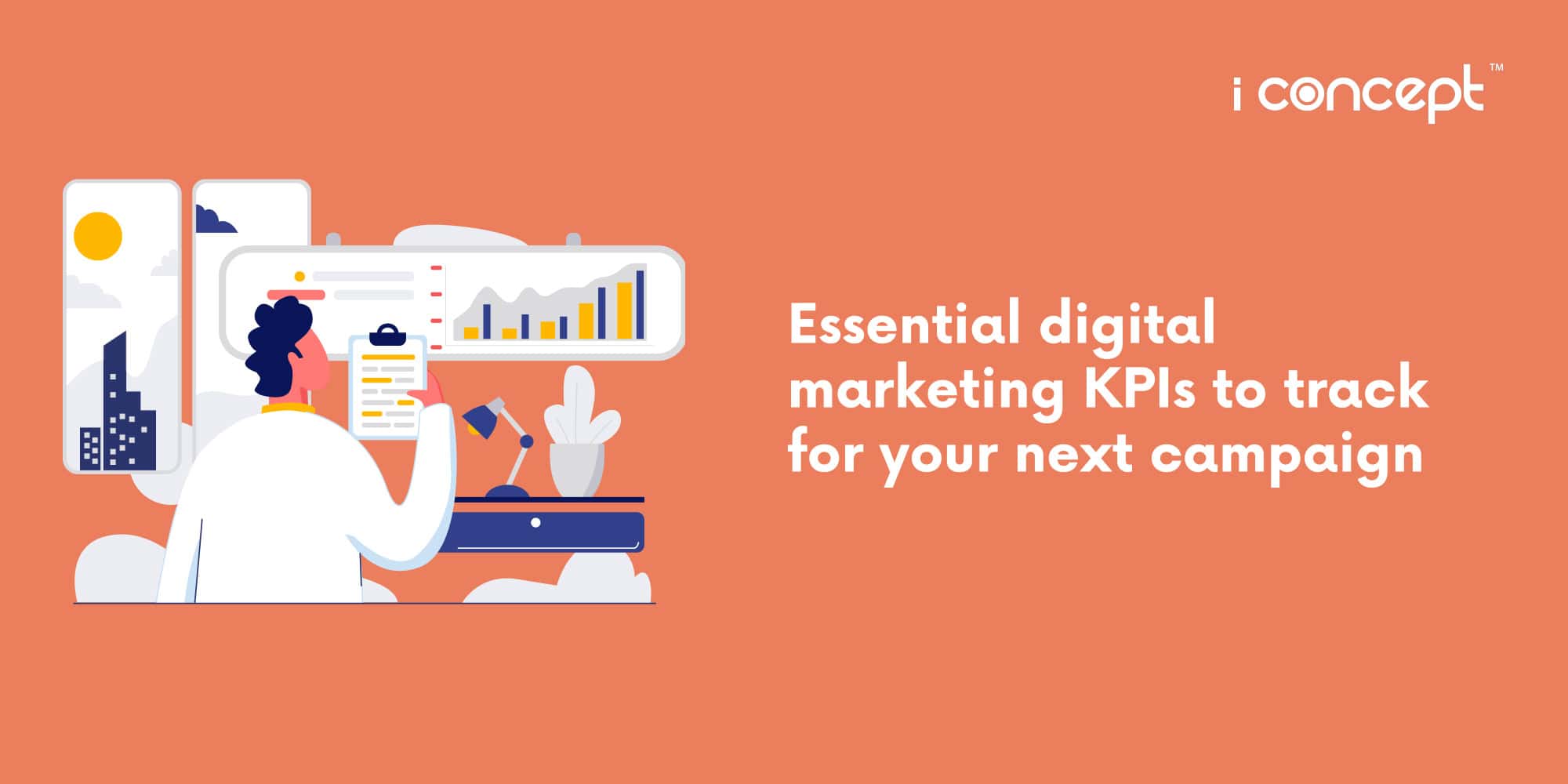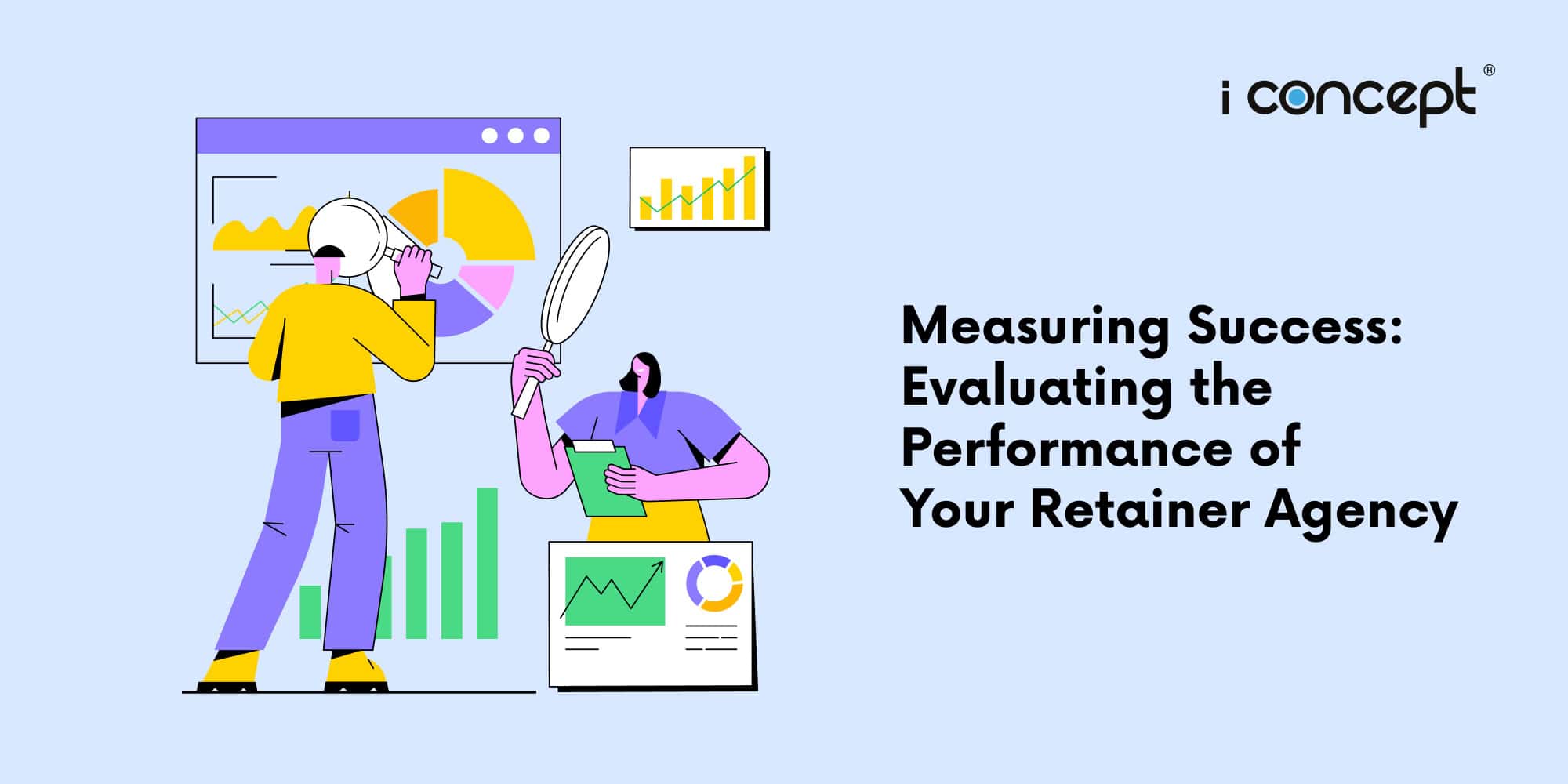Your business’s marketing strategy is only as good as the time you take to verify its effectiveness. Having the ability to identify if the goals you set have been reached or not allows you to determine what needs to be used more often or much lesser, and what needs to be better optimised.
Digital agency Singapore I Concept shares with you a practical overview of essential Key Performance Indicators (KPIs) for digital marketing and how to choose them for your initiatives, campaigns and communications.
What exactly are KPIs?
The term KPI refers to a metric that you use as a baseline to measure performance. They may be referred to in a digital or non-digital context and are typically numbers that may refer to any areas of business, including financial structures, productivity, or consumer behaviour.
The right KPIs for digital marketing will inform your future strategy, so it’s best to start out determining the KPIs for measuring your digital marketing campaign’s performance right from the get-go. You will need to establish which area of business or target goal you need to prioritise to choose the indicators that will be most effective.
First, you’ll want to take a few measures to choose the right KPIs, then look deep at your goals, and figure out how to fill in the gap.
- Keeping it clear
Make sure that you choose objectives that are crystal clear – this is about metrics and data, and you will have to use objective, not subjective, numbers that you have now in order to set goals and forecast your future numbers.
- Keeping it simple
Anyone in your organisation should be able to see and understand exactly what you are doing with the metric. This should not be complicated math – it’s basic business and analytics, so it should be easy to communicate what you are doing with the rest of the team.
- Keep it action-oriented
There are plenty of metrics floating around that you could focus on if you wanted, but the ones that matter the most are typically linked to a specific action, rather than just a value.
- Timing counts
Stick to a strict reporting and review schedule while establishing long-term, sustainable targets that align with your specific digital marketing goals.
The benefits of using KPIs for digital marketing
KPIs are integral to digital marketing success as these particular metrics offer measurable values applied to key promotional objectives.
For instance, you may set digital marketing KPIs based on return on investments (ROIs), conversion rates and customer lifetime value, among others.
By using KPIs to track your digital marketing campaigns, you will give your data clear directions, meaning you will gain a clearer understanding of which metrics will best benefit your initiatives and omit any that are surplus to requirement.
How do you choose the right KPIs for digital marketing?
Start with just a few key metrics that you know are strong indicators of your business health, such as conversions or visitor rates, then figure out whether or not you have an analytics tool to manage the metrics, or if you have to calculate (and track) them yourself.
To help steer you towards analytical success, here are five essential KPIs for digital marketing you should be tracking.
- Digital engagement
We are all aware of the power that social media holds. Understanding if you are producing content that’s worthwhile and valuable is crucial in social media management. Why spend more resources on developing images for a carousel on Instagram when the reel you posted last week is still gaining traction?
Put your efforts into what drives the most engagement. This allows your brand to have the reach you desire. One of the biggest challenges brands face is staying relevant in the ever changing digital landscape, so it’s important to always understand your audience and what content is driving the most visibility, action and engagement. While you want all of your content to be engaging, setting realistic expectations for digital marketing content and engagement goals is important. You should aim for at least 75% of your content to produce a 1%-5% engagement rate.
- Click-through rate (CTR)
This commonly tracked KPI is the percentage of clicks on your link that generated impressions. Also known as CTR, click-through rates are not only important to understand how many people are seeing your message, but also how many people are taking action and expanding their digital experience.
This metric provides insight into a variety of marketing tactics and helps you understand how your content is resonating and evoking action among your audience. Generally speaking, a CTR over 1% is healthy. Of course, optimal CTR depends on other factors like audience, content and call-to-action. If you are not impressed with what this metric reveals, reviewing historical campaign CTR gives you the opportunity to understand what is not working and implement a new strategy until you’ve reached success in this area.
- Conversion rate
The conversion. The action. The completion!
This is an insight into whether your information funnel is successful or not. It can be applied to almost any industry and any digital solutions. If you have provided a top-notch customer journey, the KPIs will most likely always be met. It’s not only getting the user to flow through your journey but completing it. That’s another key in social media management.
Your conversion rate is essentially the number of people who performed the action you presented to them divided by the total number of users who took the first action. For example, if you are running an email acquisition campaign and out of the 1,000 people that clicked your button to sign up, 100 of them successfully provided their email (the conversion), that means your conversion rate stands at 10%.
This KPI is the result of how many leads were converted. Your conversion rate is a broad value that reflects how successful your digital marketing efforts are overall, as the following ones are more specific to different aspects of your campaign.
- Keyword ranking
Keywords are still so relevant because they help represent digital content, and search engines are designed to favour groups of relevant content – it’s why ranking is so important. The more you replicate content around core keywords and phrasing, the more likely you are to rank organically and in a favourable position.
It’s also an important KPI because this is how you are initially seen by users who are in the market for the product or service you are offering. Determining if your webpage is in the position you want it to be or not allows you to be seen by more potential customers by optimising your keywords, page content, heading tags, etc. Staying relevant is critical, especially around content created for specific verticals, channels and industries. Always make sure to do this research upfront to save additional content development time later on.
- Customer acquisition cost (CAC)
Another helpful metric to track during the digital solutions journey is one that is very end-of-funnel-centric. This KPI determines the cost of the total amount it took to turn a user into a customer, and it’s oftentimes a metric that is used in paid advertising analysis. Quite simply, your customer acquisition cost (CAC) is calculated by dividing the total marketing investment by the number of customers acquired.
This digital marketing metric is widely used across eCommerce, retail and B2B organisations, and it’s oftentimes the single most important stat when deciding how effective a campaign is at returning revenue-generating customer acquisition. Obtaining this percentage is essential to budget more efficiently in the future and lets you see where you should heighten or tighten your resources.Tracking CAC across your social media management and campaigns can help you determine the scale of your advertising efforts compared to the customers you are acquiring.
Strategise your digital marketing right with I Concept
Ultimately, setting clear business objectives and measuring and adjusting progress toward them along the way will put your brand in the exact space you want it. These five important essential digital marketing metrics will keep you on the right track to sustainable content development and publishing.
Consistently measuring your digital marketing campaign’s progress is a realistic way to eventually meet each goal you set for your business. Intervening when necessary to achieve your ideal KPIs is a reassuring way to optimise your marketing strategy to stay current and deliver the content and experiences your audiences are looking for. And while it’s important to set goals and create benchmarks, don’t forget to have fun with your content.
Need some help in picking the right digital marketing strategy? It is perhaps wise to consult with top creative agency Singapore, I Concept.
Our team of brand guardians and digital marketing consultants can walk you through the different approaches and build a strategy that best fits your current business model. From developing (and renewing) brand identity, through to proposing, implementing and sustaining an integrated marketing strategy for you, our team of designers, creative strategists and programmers can offer you the right advice.
What’s more, you can now tap on up to 50% fundings from the Productivity Solutions Grant as you get digital agency Singapore I Concept to help kickstart your campaign with our dedicated digital solutions.
Feel free to ask us anything and everything about digital marketing.










